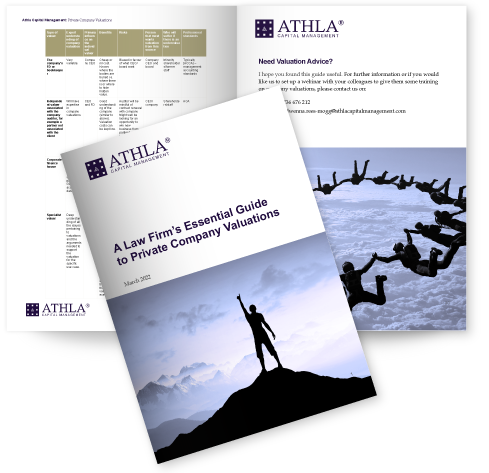New terminology to chew on..
May 27, 2025

What on earth is TVPI, DPI and MIRR? And do we need guardrails as well as frameworks in the valuations industry?
Before I explain why the terms TVPI, DPI and MIRR are now firmly on the agenda, I just wanted to let you know that we have just promoted Sahnan Syed to join Jack Buchanan-Rolleston and Martin Redmond as part of the Senior Analyst team. Many congratulations Sahnan.
Sahnan is a demon at preparing DCF and Monte Carlo simulation valuations amongst his many skills. So if you need a complex valuation doing, he’s a great person to have on the team.
We have provided his contact details below in case you want to get in touch with him.
The great thing about running a business which specialises in valuing assets, especially shares and businesses, is that it is operating in such a wide field. No valuation is ever quite the same. It keeps us on our toes.
And new perspectives emerge all the time from different places.
Have you read this article? Roundtable Report: Improving Private Market Valuations – Funds Europe. (You can listen to it too if you click on the link and press the button at the top!)
It outlines the outputs from a roundtable held by many different stakeholders in investment and, crucially, provides a critique on the use of IRRs in investment, especially when it comes to valuing funds.
The topic under discussion was the well-known issue that IRRs are subject to manipulation and therefore what alternatives there might be.
Providing an IRR is only of use if you understand the methodology used to compile it. If it does not align with realisable returns it is of no value.
The panel’s view was that it should not be ignored, more that it should be used alongside other approaches.
There are also new multiples valuations methodologies such as TVPI, DPI (Total Value to Paid In / Distributed to Paid In) which can be useful for assessing fund performance.
One view was that money multiples are more useful for large stable investments, compared to using IRRs for growth companies. An emerging IRR methodology is MIRR (Modified IRR) which uses the hurdle rate as the discount factor.
At the end of the day, if people relying on these approaches do not understand what they mean, we are all still in trouble, so the education piece remains a priority.
If you would like your teams to have some training on these approaches to valuations (especially of funds) give us a buzz and we can jump on Teams.
Another topic that arose at the roundtable was the issue of frequency and transparency of private market valuations. I am biased on this topic. The value of an asset, be it a fund or an individual asset, really can change dramatically day to day. Having the capacity to compute valuations very frequently is the issue, not the underlying truth.
As the report notes: “Phil Bartram, a partner with Travers Smith, succinctly framed the core issue: “The frequency has to match the liquidity.”.”
I would be interested in challenging this view at some point. A price is always better than no price, even if it is a desktop valuation where the constraints around liquidity are well understood. Just look what Zoopla did for transparency around the value of the UK housing market.
Of course, as the panellists discussed, the challenges around steep levels of volatility in pricing illiquid assets could have systemic issues. However, the discussion did infer that there may be a move towards monthly valuations for funds rather than quarterly (the benefits would outweigh the costs in my view).
They also raised the important issue of having an independent valuer who should not necessarily be the auditor! Music to my ears. Whilst competent in-house teams do an excellent job at preparing valuations, without an independent opinion there remains a risk of an accusation that the number has been manipulated at the edges. This matters particularly when the asset is going to move into a secondary where price negotiations often start from the last quarter’s valuation.
This is all valuable food for thought. Inevitably, even the valuations of companies that have nothing to do with the investment markets rely on data from quoted and unquoted comparables (including for example VC and PE valuations from fundraises). So they become inextricably linked.
The most profound conclusion from the roundtable is that frameworks need to be put in place which are understandable to the recipient (as you will know we use the right framework for the right situation when we do a valuation). Perhaps what is also needed is to establish some guardrails too, to prevent abuse.
For now, transparency (in the form of a plain English explanation of every step of a valuation exercise) is the answer to the challenge.
If the audience of a report can understand it, they can challenge it. If it is explained, it means the valuer has evidenced what they have done. Disputes are therefore fewer.
That is why we write longer written reports. We think it matters.
If you have not yet seen one of our reports, let us know and we will send you a redacted copy so you can see it for yourself.
And we are always open for business for valuation projects no matter how small or large.


